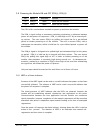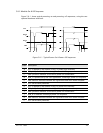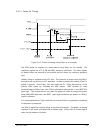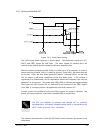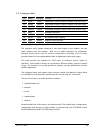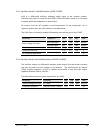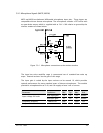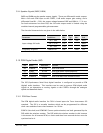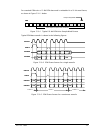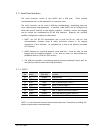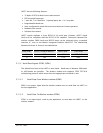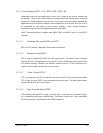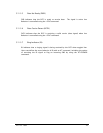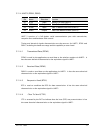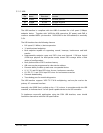
LZT 123 1836 51
5.9.4 Speaker Signals (EARP, EARN)
EARP and EARN are the speaker output signals. These are differential-mode outputs.
With a full-scale PCM input to the CODEC, 0 dB audio output gain setting, and a
differential load RL = 30Ω, the output voltage between EARP and EARN is 1.5 V rms.
For load resistances less than 30Ω, the full-scale output needs is limited using the
modules internal programmable gain attenuator.
The electrical characteristics are given in the table below.
Parameter Conditions Min Typ Max Unit
RL = 30 1.34 1.5 1.68 Vrms
RL = 16 1.41 Vrms
Input voltage full scale
RL = 8
1.24 Vrms
Frequency response -3dB cut-off 300 3400 Hz
5.10 PCM Digital Audio (SSP)
Pin Name Direction Function
66 PCMCLK In/Out Serial PCM clock
67 PCMFS In/Out Serial PCM frame synchronization
68 PCMDTM Input Serial PCM data to module from host
69 PCMDFM Output Serial PCM data from module to host
The SSP (Synchronous Serial Port) digital interface is configured to provide a PCM
(digital) audio interface. This interface can be used to process PCM digital audio
signals as an alternative to routing signals to the CODECs through the analogue
uplink and downlink chains.
5.10.1 PCM Data Format
The PCM digital audio interface for GS64 is based upon the Texas Instruments SSI
standard. The SSP is a versatile interface which can be programmed for different
clock rates and data frame sizes between 4 to 16 bits.
PCMCLK (bit clock) and PCMSYNC (frame synchronization) are both generated by the
DSP within the wireless modem. The DSP within the wireless modem in this instance
is the master for all external PCM, so clocks and data from external devices must be
synchronized to it.



